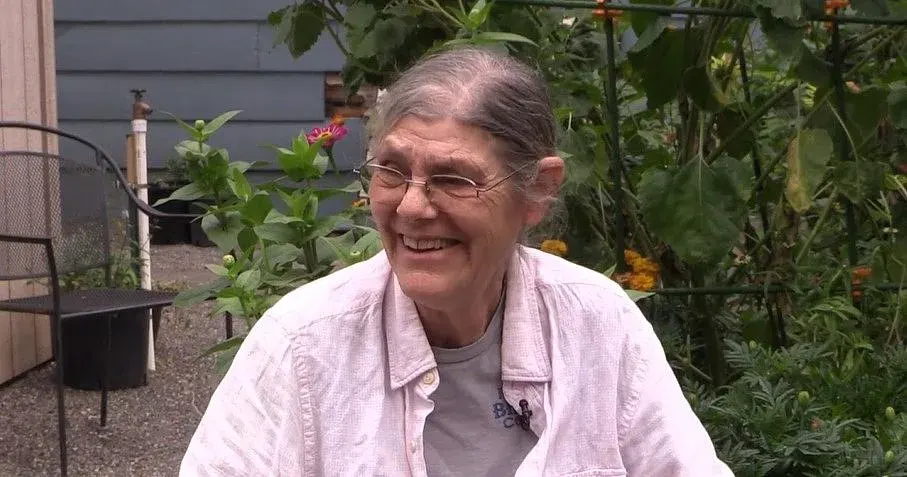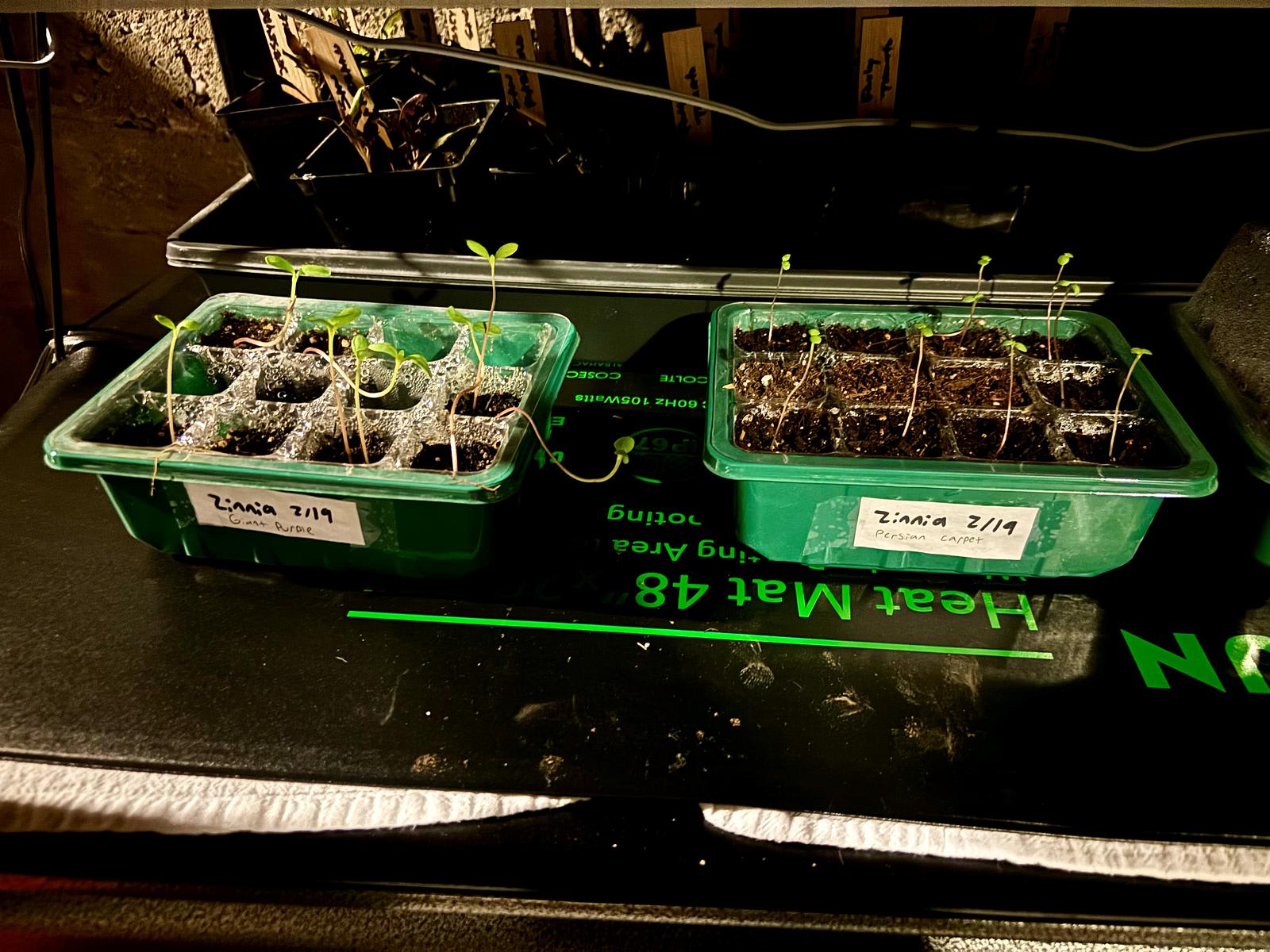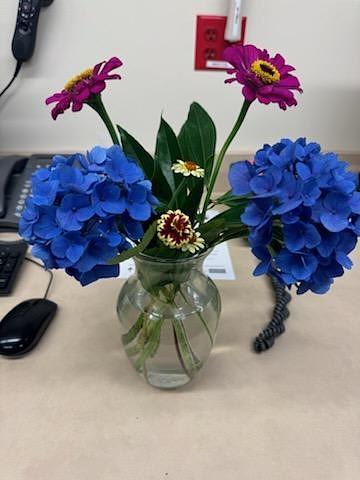Growing hope

It was a beautiful summer evening along the coast. Lauren was sitting on her porch, looking out over her lush garden at the elk feeding on the apple trees by the barn.
“I felt this wave of overwhelming tiredness,” recalled Lauren. “I got up to go in the house and it felt like my throat shut down. I couldn’t breathe and as I was going through the door, my balance just left me.”
Lauren asked her husband Jake to call 9-1-1. “I knew something was going horribly wrong with me.”
She was having a stroke. Medics got her to Providence St. Vincent Medical Center in time for clot busting treatment to make a difference in Lauren’s recovery.
“The stroke affected my balance, my vision, my vestibula. I lost my center of gravity – everything wanted to pull me to the right,” explained Lauren.
Eventually, she transferred from Providence St. Vincent to the Providence Acute Rehabilitation Center, or PARC, at Providence Portland Medical Center to relearn what the stroke stole from her.
“I had to retrain my brain to know where my center is and it started out really different,” said Lauren. “I’d know I’m leaning and the gals would tell me to shift my weight to the left and my conscious brain would be saying, ‘ok, shift yourself to the left.’ But apparently, those connections weren’t there. I’d be telling my body to do it, but it didn’t know how to do it.”
The PARC team used all their expertise to help Lauren, and then they added a special incentive for this gardening-loving patient.
Growing hope
Last summer, caregivers on 4K – the PARC unit – decided to adopt one of the raised beds in Providence Portland’s new caregiver garden located just east of the hospital.
 The garden produced a lot of vegetables the first year, but occupational therapist Claire Cutlip decided to try something different this year – cut flowers only. And she started with seeds.
The garden produced a lot of vegetables the first year, but occupational therapist Claire Cutlip decided to try something different this year – cut flowers only. And she started with seeds.
“Patients were able to practice fine motor skills by using tweezers to plant the seeds in small pods on the unit,” said Claire. “And then, patients would come into the therapy gym checking to see the progress of the plants, watching for them to pop up. It helped build community and give purpose to some of the rehab exercises.”
Watch a video of Lauren and her caregivers in the garden.
Once planted in the raised bed, some patients are able to make their way to the garden as part of their therapy. “They work on negotiating the uneven gravel walkway if they can stand, or from a wheelchair, they lean in and reach to harvest flowers. They can work on balance, focus and use their hands, all while doing something they enjoy,” said Claire.
Maybe no one has relished this garden therapy more than Lauren. So far away from her beloved country spread of vegetables, flowers and apple-munching elk, she found hope growing right alongside the zinnias and marigolds.
 “It’s totally wonderful,” said Lauren. “I’m an outdoor person. I mean, it’s wonderful in the unit and everybody’s wonderful and caring, but it’s still four walls that surround you – and the two halls. Being outside, it’s life to me and I love the garden, just being out and seeing the bugs and critters and it’s been wonderful to be able to come out with Claire and cut the flowers. Then we go in and arrange them.”
“It’s totally wonderful,” said Lauren. “I’m an outdoor person. I mean, it’s wonderful in the unit and everybody’s wonderful and caring, but it’s still four walls that surround you – and the two halls. Being outside, it’s life to me and I love the garden, just being out and seeing the bugs and critters and it’s been wonderful to be able to come out with Claire and cut the flowers. Then we go in and arrange them.”
A place for healing to bloom
Often, patients who are unable to make it to the garden join in with the flower arranging on the unit. Small bouquets add a touch of the harvest to the nurse’s station, exercise gym and patient rooms. Splashes of color bring the outside in.
The seed to bouquet concept perfectly represents the care provided by the PARC team. Patients greatly diminished by stroke, illness or brain injury regain abilities and bloom under the compassionate care of the team members.
“The whole point of this garden is to build on what we do in the unit in a way that brings the patient joy,” explained Claire. “Lauren loves gardening. She has worked a lot on standing with her walker and balancing as she reaches and bends to harvest the flowers. If you enjoy what you are doing, you will get better more quickly because those connections are happening from a neuro point of view. Because she is so passionate about gardening, I do feel her time at the raised bed was a big part of her healing.
And heal she has. Lauren went home in late August and sends this progress report:
 I am continuing to improve slowly and steadily, and I have really enjoyed this beautiful early fall weather in my garden. I make the biggest strides in improvement when I get in my garden and get something constructive accomplished. We’ve been eating green beans and yellow crookneck squash ever since I got home… the taste of summer for me.
I am continuing to improve slowly and steadily, and I have really enjoyed this beautiful early fall weather in my garden. I make the biggest strides in improvement when I get in my garden and get something constructive accomplished. We’ve been eating green beans and yellow crookneck squash ever since I got home… the taste of summer for me.
Tell all the folks there that I’m doing well and I think of them all every day – so grateful for all that they did to help me with my recovery.
Thank you,
Lauren